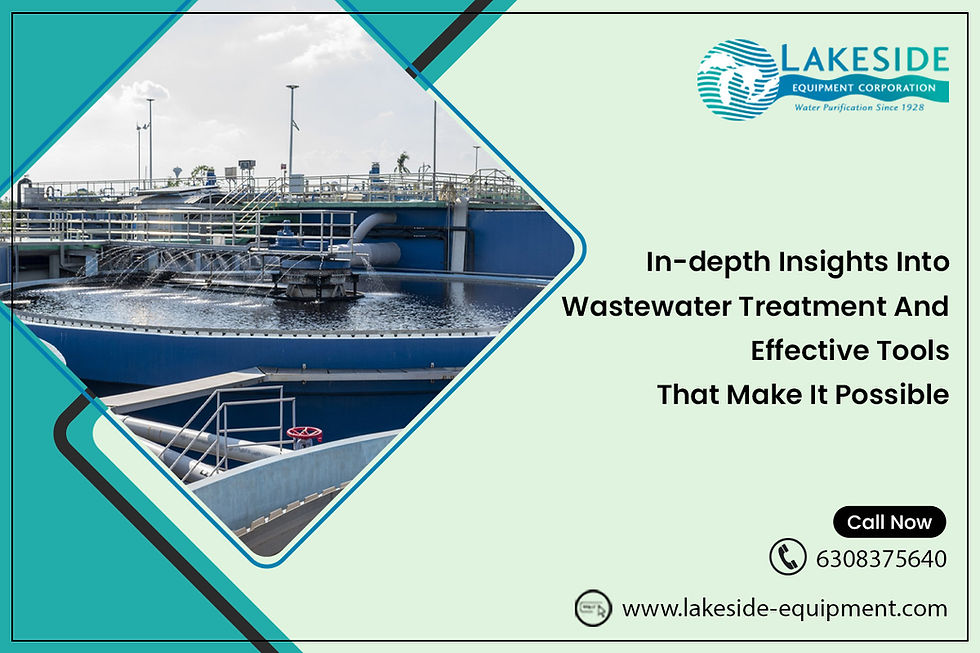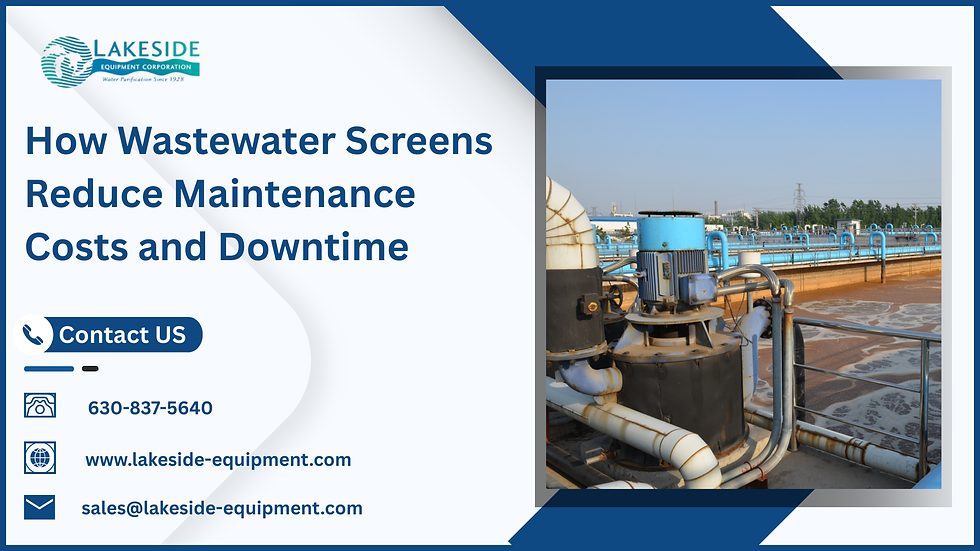In-depth Insights Into Wastewater Treatment And Effective Tools That Make It Possible
- lakesideequipment

- Mar 6, 2024
- 2 min read
Every day, millions of gallons of wastewater flow through hidden networks, carrying a cocktail of used water, debris, and pollutants. Before this water can be safely released back into the environment, it undergoes a complex wastewater treatment process – a process that relies on reliable tools like bar screens and clarifiers. Imagine a giant colander placed at the beginning of a treatment plant. That's essentially the function of wastewater screens, particularly wastewater bar screens. These screens consist of parallel bars spaced at specific intervals, allowing water to flow through while capturing larger debris like rags, sticks, and plastic. This protects downstream equipment from damage and clogging, ensuring smooth operation of the entire treatment process.
While bar screens handle larger objects, rotary screens, and fine screens come into play for finer filtration. Rotary screens, as the name suggests, rotate continuously, capturing smaller particles like leaves and food scraps. Fine screens, with even smaller gaps, target grit, sand, and other microscopic materials. By removing these solids, screens significantly reduce the load on subsequent treatment stages, leading to cleaner and more efficient wastewater treatment.
Here are some ways you can contribute to the effectiveness of wastewater treatment
Dispose of wipes and other non-flushable items properly.
Avoid pouring grease and oil down the drain.
Be mindful of what you flush down the toilet.

Once the wastewater is screened, it enters the wastewater clarifier, another essential player in the game. Think of clarifiers as giant settling ponds. As the influent (inflowing water) enters the clarifier, it slows down dramatically. This allows heavier solids, like sand and organic matter, to settle at the bottom due to gravity, forming a layer of sludge. Meanwhile, lighter materials like oil and grease float to the surface, forming scum.
Wastewater Bar Screens, wastewater screens, and clarifiers are superlative tools for wastewater treatment, working tirelessly behind the scenes to remove harmful pollutants and protect our environment. By understanding their critical roles, we can appreciate the complex yet crucial process of transforming wastewater into cleaner, safer water.




Comments